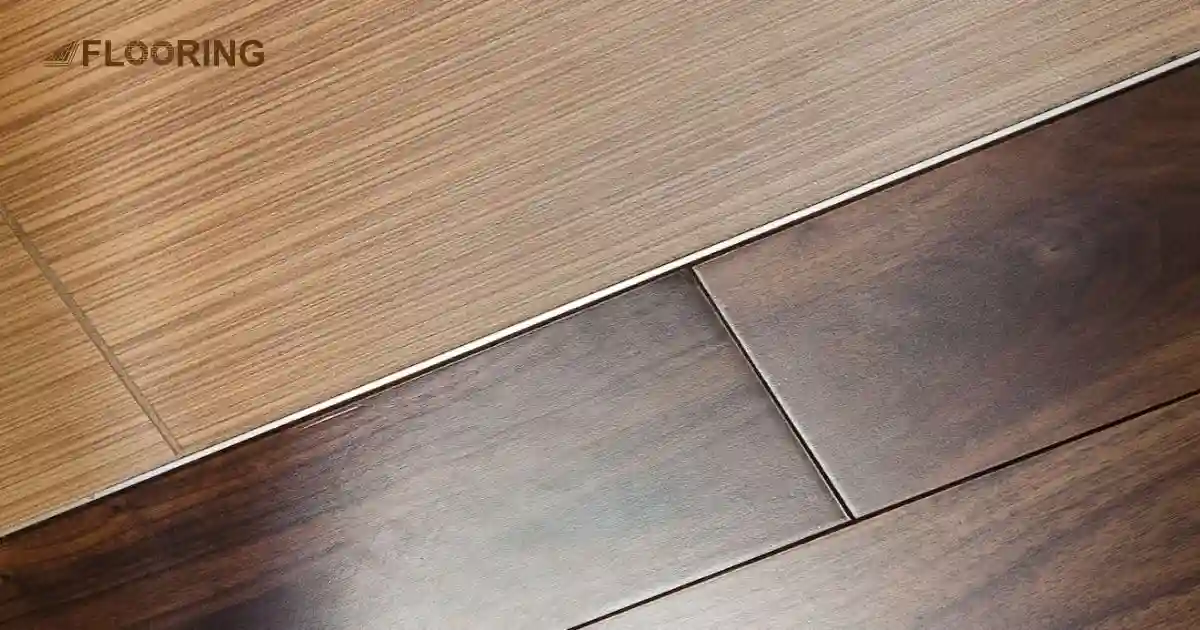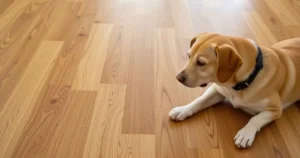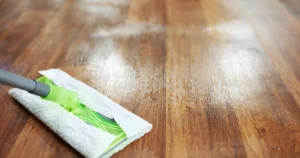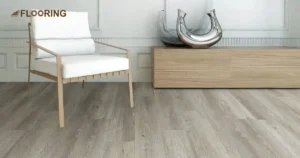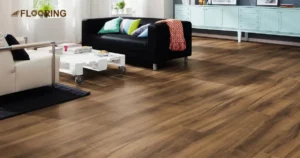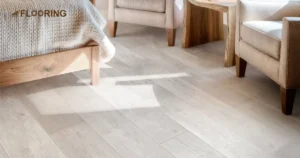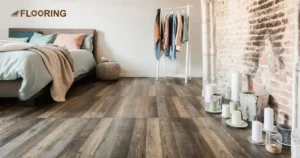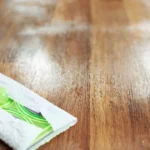Flooring transitions are essential elements in home design, seamlessly connecting different types of flooring. They enhance the overall aesthetic appeal of your space while serving practical purposes.
Table of Contents
This guide explores various flooring transition ideas, from traditional to creative options. We’ll cover popular transition methods, innovative designs, and practical installation tips.
Learn how to choose the right transitions for different floor types and discover current trends. Whether you’re planning a DIY project or considering professional installation, this article provides valuable insights for achieving smooth, stylish floor transitions in your home.
Key Takeaways
- Flooring transitions serve both functional and aesthetic purposes, connecting different floor types seamlessly.
- Popular transition methods include T-molding, curved transitions, and diagonal cuts, each offering unique benefits.
- Creative ideas like mixed materials and gradual color changes can enhance your home’s overall design.
- Consider factors such as floor height, material compatibility, and room layout when choosing transition methods.
- While some transitions are DIY-friendly, complex projects may benefit from professional installation for the best results.
Popular Flooring Transition Methods
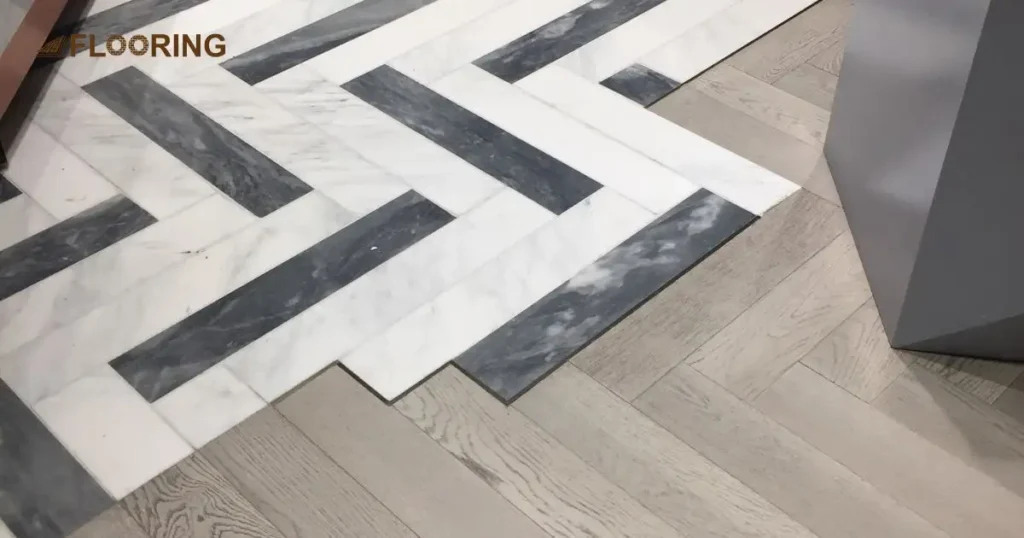
Flooring transitions come in various styles to suit different needs and aesthetics. These methods offer solutions for connecting different floor types or creating visual interest between spaces. Let’s explore some popular transition techniques used in modern interior design.
T-Molding Transitions
T-molding transitions are versatile and widely used for joining floors of equal height. They’re particularly useful for kitchen tile-to-wood floor transitions or between rooms with similar flooring materials.
T-moldings are available in various materials, including wood, laminate, and metal, allowing for seamless integration with different floor types. They’re particularly useful in doorways or between rooms with similar flooring materials.
Curved Transitions
Curved transitions offer a softer, more organic approach to floor connections. This method involves creating a gentle curve where two flooring materials meet.
Curved transitions can be achieved using flexible transition strips or by custom-cutting flooring materials. They work well in open-concept spaces, creating a flowing transition between areas without harsh lines.
Diagonal Cut Transitions
Diagonal cut transitions provide a unique and visually interesting way to join different flooring materials. This technique involves cutting the flooring at an angle where two materials meet.
Diagonal cuts can create a dynamic visual effect and are often used to add character to a space. They’re particularly effective when transitioning between wood and tile floors.
Mosaic Tile Transitions
Mosaic tile transitions offer a decorative solution for blending different flooring types. This method uses small tiles arranged in a pattern to create a gradual transition between materials.
Mosaic transitions can be customized to complement both adjoining floors and the overall room design. They’re often used in bathrooms or kitchens to transition between tile and other flooring types.
Zigzag Pattern Transitions
Zigzag pattern transitions create a bold, eye-catching connection between different flooring materials. This technique involves cutting the flooring materials into a zigzag or chevron pattern where they meet.
Zigzag transitions can add a modern, geometric element to a space. They work well in contemporary interiors and can be used to create a focal point in a room.
Creative Flooring Transition Ideas
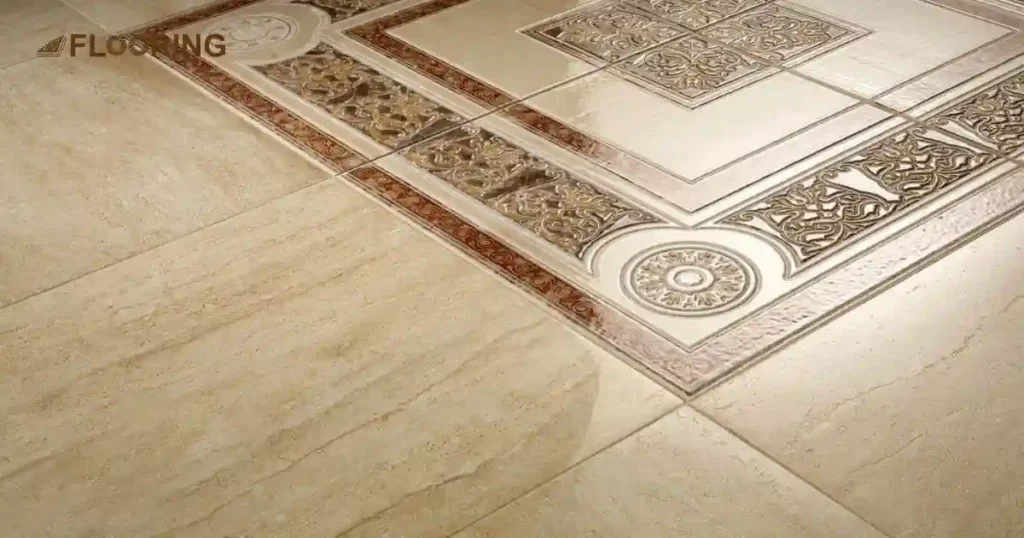
Creative flooring transitions can elevate your interior design and add unique character to your space. When considering tile-to-vinyl transition ideas, mixed material transitions offer a stylish solution. Let’s explore some creative ideas for transitioning between different flooring materials.
Mixed Material Transitions
Mixed material transitions combine two or more flooring types to create a distinctive border. This approach uses contrasting materials to form a visually interesting transition zone.
For example, you might use a strip of tile between hardwood and carpet, or incorporate a metal inlay between two wood types. Mixed material transitions allow for customization and can complement your overall interior design scheme.
Elevated Transitions
Elevated transitions use height differences to create a clear separation between flooring types. This method involves raising one floor slightly above the other, often with a small step or platform.
Elevated transitions can be particularly useful when dealing with floors of different thicknesses or when you want to define separate areas within an open space. They can be enhanced with lighting or decorative elements for added visual impact.
Gradual Color Transitions
Gradual color transitions create a smooth visual flow between different flooring materials or within the same material. This technique involves using flooring in progressively changing shades to blend one area into another.
For example, you might transition from light to dark wood tones, or gradually shift from one tile color to another. Gradual color transitions work well in open-concept spaces and can create a sense of continuity throughout a home.
Inlay and Pattern Transitions
Inlay and pattern transitions use decorative designs to bridge the gap between different flooring types. This approach involves creating a pattern or design at the transition point, often using contrasting materials or colors.
Inlays can range from simple geometric shapes to elaborate mosaic designs. Pattern transitions offer a high level of customization and can serve as a focal point in your interior design.
Natural Stone Strip Transitions
Natural stone strip transitions use slender pieces of stone to create an elegant divide between flooring materials. This method incorporates materials like marble, granite, or slate to form a sophisticated transition.
Natural stone strips can add a touch of luxury to your flooring design and work particularly well in transitioning between tile and hardwood or in creating subtle divisions in open spaces. The unique patterns and colors of natural stone can complement a wide range of interior styles.
Tips for Seamless Flooring Transitions
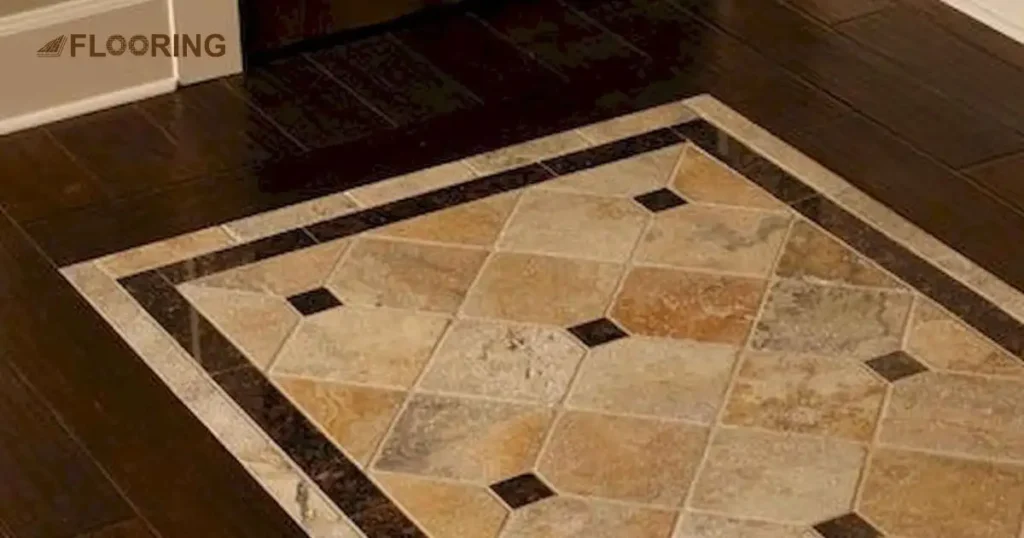
Achieving seamless flooring transitions requires careful planning and attention to detail. Here are some practical tips to ensure smooth and visually appealing connections between different flooring types:
- Measure Accurately: Take precise measurements to ensure transition pieces fit perfectly between floors.
- Choose Compatible Materials: Select transition strips or moldings that complement both types of flooring in terms of color and texture.
- Consider Height Differences: Use appropriate transition pieces to accommodate any height variations between flooring materials.
- Plan for Expansion: Allow for natural expansion and contraction of materials, especially with wood floors.
- Secure Properly: Ensure all transition pieces are securely fastened to prevent movement and tripping hazards.
Flooring Transitions for Open Concept Spaces
Open-concept spaces present unique challenges and opportunities for flooring transitions. In these layouts, transitions play a crucial role in defining different functional areas while maintaining a cohesive look throughout the space.
Consider using variations in wood grain direction or tile sizes. Color gradients or inlaid patterns can create soft boundaries between living areas. These techniques help delineate spaces without disrupting the overall design.
DIY vs. Professional Installation for Flooring Transitions
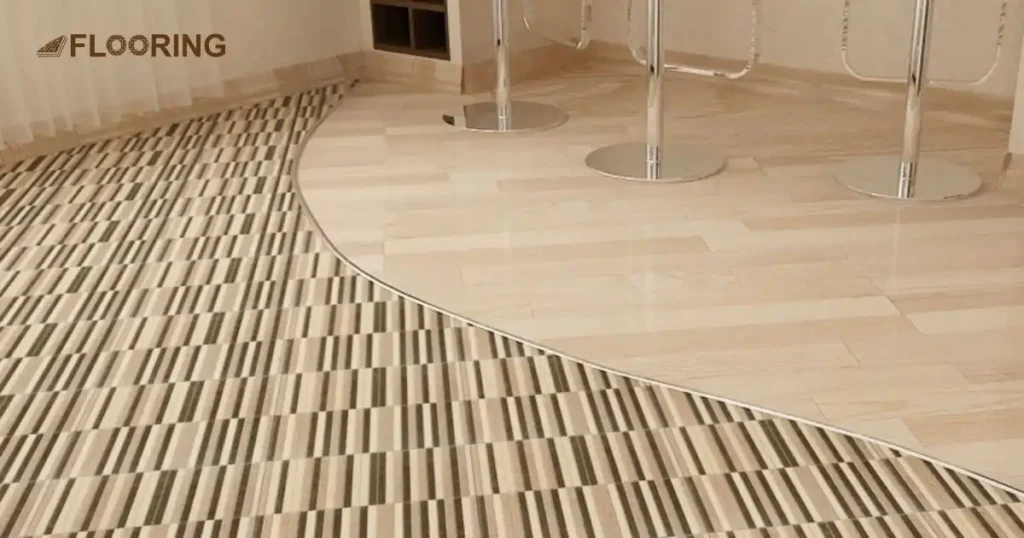
Deciding between DIY and professional installation depends on several factors, including complexity, budget, and skill level. Here’s a comparison:
| Factor | DIY Installation | Professional Installation |
| Skill Level Required | Basic to moderate skills needed | Expertise ensures precision and quality |
| Cost | Generally lower cost, but the potential for errors | Higher upfront cost, but fewer mistakes |
| Time Commitment | It can be time-consuming depending on the experience | Faster completion with experienced pros |
| Complexity Handling | Suitable for simple transitions | Best for complex or large-scale projects |
Conclusion: Choosing the Right Flooring Transition for Your Home
Selecting the right flooring transition affects both aesthetics and functionality. Consider the flooring types, home style, and specific needs of each area. Consider various tile threshold ideas to find transitions that complement your flooring and enhance your home’s design.
Transitions protect floor edges and provide smooth movement between surfaces. They can also enhance your interior design. Choose a solution that complements your flooring and contributes to your home’s overall look.
Frequently Asked Questions
How much do flooring transitions typically cost?
Costs vary widely based on materials and complexity. Simple transitions might cost $2-$10 per linear foot, while custom designs can range from $15-$50 per linear foot. Professional installation adds to these costs.
Can I use flooring transitions on the stairs?
Yes, transitions can be used on stairs. They’re often installed on the edge of each step for safety and aesthetics. Stair nosing is a common transition type for this purpose.
Are there eco-friendly options for flooring transitions?
Many eco-friendly options exist. These include transitions made from bamboo, cork, or recycled materials. Some manufacturers also offer sustainably sourced wood transitions.
How do I maintain and clean flooring transitions?
Clean transitions with the same method as your main flooring. Regular sweeping and occasional damp mopping usually suffice. Avoid harsh chemicals that might damage the transition material.
Can flooring transitions help with soundproofing?
Some transitions can contribute to soundproofing. Rubber or cork transitions can help reduce sound transmission between rooms. However, they’re just one part of a comprehensive soundproofing strategy.
How long do flooring transitions typically last?
Well-installed transitions can last as long as your flooring. High-quality materials in low-traffic areas might last 20+ years. However, transitions in high-traffic areas may need replacement sooner.
Are there ADA-compliant flooring transitions?
Yes, ADA-compliant transitions exist. These are designed to be safe for wheelchair users and those with mobility issues. They typically have a gradual slope and are no higher than 1/4 inch.
